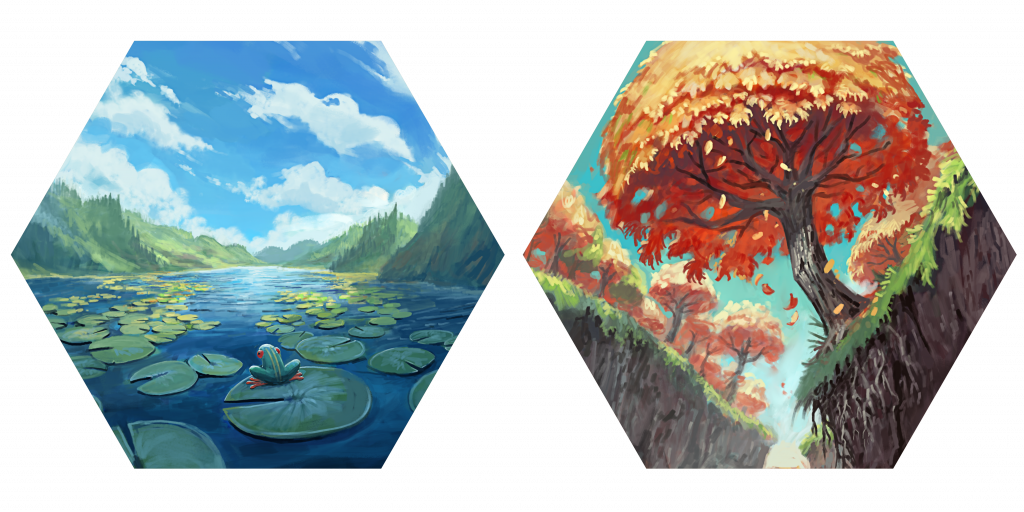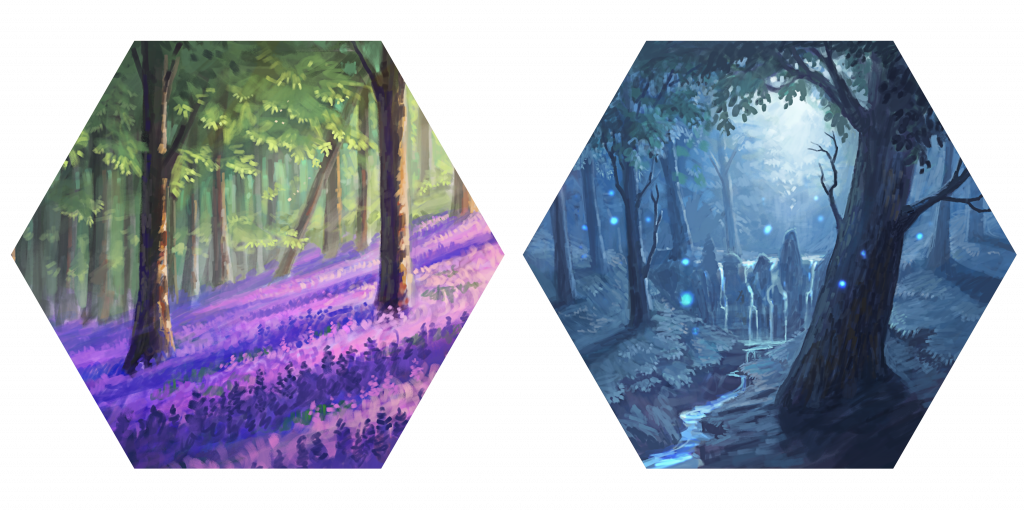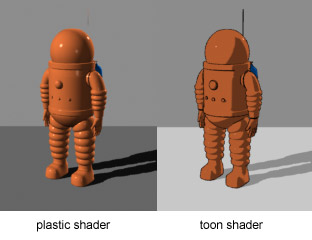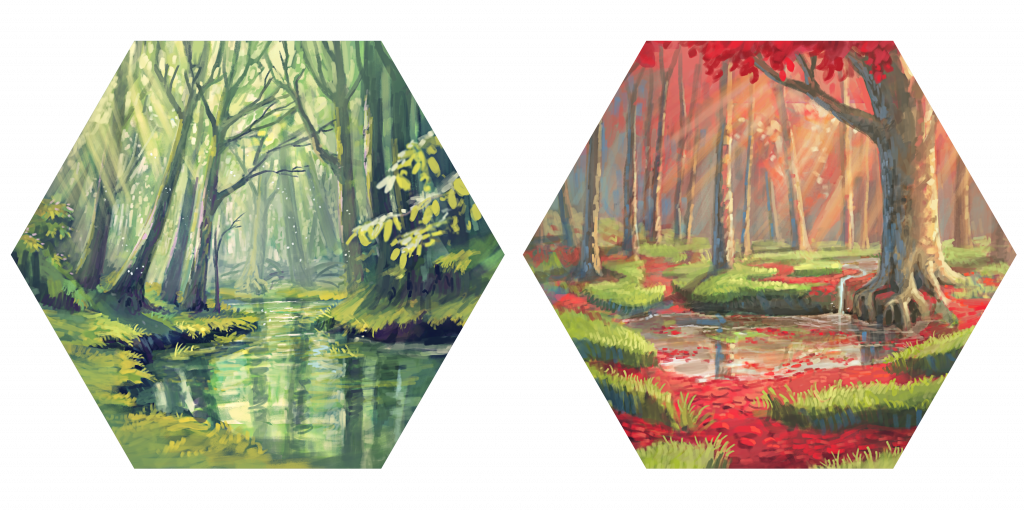I’ve had the great pleasure and honor of working with a number of incredible artists for Stonemaier Games products. Art direction is always an interesting puzzle, something I’ve tried to learn over time (and am still learning), so I was excited to hear insights from this topic from a fellow publisher–Jasper at Pine Island Games–whose excellent blog I read on a regular basis.
The rest of this guest post is written by Jasper.
***
I’m a long-time reader of Jamey’s blog, so am honored to be able to share the Stonemaier platform for a day. When choosing a topic for this article, I wanted to live up to the blog’s spirit of transparency and shed a bit of light on a challenge that I faced when we started our publishing journey.
It’s one of the first big hurdles aspiring publishers face, and even today is frustratingly opaque. So, let’s dive in – here is how to find, budget for, and hire an illustrator for your board game.
Understanding What Your Game Needs
A large part of self-publishing is in mapping out how to apply your resources and skills to create and launch an amazing game.
When we started down the path of publishing our first game (Nut Hunt, which is Kickstarting this June), premium quality, professional illustration was important to our overall plan. We’re a young company and want to build a reputation for beautiful, well-developed, and produced games.

But, not every game has the same needs.
Whether it’s for budgetary or creative reasons, there are a slew of options for illustration – from high cost professionally established, fully rendered artwork, to cute cartoon style drawings, to affordable royalty free work.
I hope that by contextualizing some of the costs, and the process, you can find the perfect solution for your game.
The Cost of Illustration
This is a tricky topic to address that always brings plenty of people out of the woodwork to tell me I’m wrong (in both directions). There is a huge range of cost of illustration driven by your specific needs, style, quality, and the illustrator that you’re working with.
But, that isn’t very helpful. So, let’s look at some actual numbers.
Illustration from established professional artists costs at a minimum $50 an hour. While not explicitly stated, illustrators often have a baseline rate and build up the overall cost of a commission based on their expected time investment.
Fully rendered, high detail illustration for a card could run between $250 to north of $1,000. A box cover could be in the $2,000-$6,000 range. Here are some places illustrators have publicly talked about their rates: Suzanne Helmigh, Mike C (who is a manager for various fantasy artists).

For Nut Hunt we queried a handful of professional illustrators with an ask of 19 fully rendered landscape illustrations for location tiles, 1 box art, and some small ink drawings. Most quotes came back at around $10,000 for the full game. Here’s an actual query response:
I can say my interest would be high and am available with about a 2 month lead time right now.
A project like that would probably take me 2-3 months to complete.
Given my current understanding of the scope of the project, I would estimate the total cost to be around $9550 USD
That would include license fees for commercial use but NOT full copyright transfer.
We chose an illustrator who was towards the higher end of the price range, added some additional artwork, and purchased some additional rights. The final bill came in at $14,100.
Some examples of illustration budgets from other publishers:
- Jamey shared with me that most Stonemaier games end up with an art budget of around $25-$30k, and most Stonemaier expansions have an art budget of around $10-$15k.
- Illustration for Quests & Cannons by Short Hop Games was $13,200. By item it was $75 per “loot card”, $350 for each character, $600 per large frame illustration, $150 per card back, and about $1,000 for the box composition.
- Kingdom Candy: Monsters by Giga Mech Games cost $3,500 all in, with each card at about $70 (commissioned in 2018).
Factors Impacting Cost
- Rendering is the level of detail in shading. Fully rendered means a smooth detailed shadow, cel shading uses bands of color, and flat colors, are solid-colored blocks with maybe some line work or hatching to denote the shadows.

- Style: Cartoon style illustration takes less time, and therefore costs less than a painterly style.
- Level of Detail: An illustration of a knight in chainmail will be more expensive than a knight in full plate – because there’s more detail and so it takes longer. The same holds for the number of elements in each illustration (multiple characters, etc).
- Background: Many games forgo backgrounds, or re-use backgrounds across assets. For instance, in a game like Clank the characters are the focus of the cards, so re-using backgrounds is a great way to save money.
- Level of Professional Advancement: Professionally established illustrators are in higher demand and charge more for their services. They also offer a higher surety of execution and quality.
- Cost of Living Arbitrage: Kingdom Candy: Monsters hired an illustrator living in Indonesia. If you are tied into the art communities in geographies with lower cost of living, you may be able to source quality artwork at lower rates.
- Rights Acquired: When you commission artwork you are paying for the work to be created and licensing certain rights from the creator. This should include use and resale for the purposes you need, but you can also pay for additional rights like exclusivity.
Where to Find a Professional Illustrator
You can find skilled illustrators on any platform, but my experience is that some have a higher concentration of skilled creators. These groupings aren’t meant to denigrate anyone who is on a specific platform, they’re just a reflection of my experience with each.
Premium/Professional Quality:
- Board Game Geek: Find the board games that have your favorite art, go on BGG and look at the credits. Google the illustrators, find their Art Stations and webpages, and reach out. In a similar vein, games like Magic: The Gathering have employed hundreds of high-quality artists. Scroll through an image gallery of a recent set and I guarantee you can spot some art that you love, by artists who are open to commission.
- TikTok / Twitch / Instagram: There are some vibrant social media communities of illustrators which are great places to browse for an artist. When you find an artist you like, you can see a bit of a behind the scenes of their work process and interact with them (to see if there is a good interpersonal fit). An added bonus is that they have a built-in audience that can help your marketing efforts.
- Art Station / Deviant Art: A lot of artists use Art Station as their professional landing page. It can also be a good place to browse. The biggest drawback is that it can be less obvious as to who is actively taking commissions.
- Jamey’s Lists: A while ago, Jamey posted a list of over 200 artists and graphic designers whose work he loves. The list has grown over time, and the post includes comments from many other talented artists as well. He also recently share a list of amazing BIPOC artists.

A Broader Range of Quality:
- Your network: This will be a lot of hit and miss depending on your social network. Make sure that you honestly assess the skill-levels of your friends and family – and that you lay out clear expectations. If you are pursuing board game publishing professionally, then you need partners who will treat it professionally and expect to be treated like professionals.
- Forums for sharing artwork – with rules against solicitation: Examples of this would be board game design groups like the Art & Graphic Design for Tabletop Games Facebook group, or the DND subreddit. Anywhere where people are sharing their commissions should have some good talent. I’ve had a harder time finding high skilled illustrators in forums specifically for soliciting work (more on that below).
More Difficult to Find High Quality & Professional Level Work:
- Forums for soliciting work: I’ve had very little success in finding high quality professional level illustrators in places like Starving Artists and other forums for soliciting illustrative work. I am sure there are some great illustrators on the platforms, but when posting to those forums I found my inbox inundated with less experienced artists.
- Fiverr/Upwork: Like the forums, platforms specifically for hire had a larger pool of less experienced illustrators.
Reduced Rate Options:
- Royalty Free: Not every game needs to commission bespoke artwork to be a success. Others have compiled pretty good lists of where to look, so I will leave those here: The Mindful Geek, The Game Crafter.
- Back Catalogue: Many artists will license out their back catalogue of work at a reduced rate. So, if you find an illustrator that you love, but they are out of your price range, ask about their back catalogue. This is especially true for more generic subject matter.
Random Thoughts & Resources
- How to Commission Illustration: Randy Gallegos has a great article on etiquette and process for commissioning professional illustration.
- What Rights to License: If you are making a board game, you need use and resale rights in perpetuity for physical board games, digital board games, and marketing. You can also buy exclusivity, although it’s not necessary. When in doubt, always talk to a lawyer, but here are some contract templates to get you started.
- Technical Considerations: We commission all our work in at least 400 DPI. Many printers print at 300 DPI, and you want flexibility to manipulate the illustration.
- Our Illustrator for Nut Hunt is Stephen Nickel. We had an excellent experience working with him. He’s upfront and delivered a product that blew away our expectations. He’s currently working as a concept artist at Broken Anvil Miniatures, but is taking some commissions on the side. I encourage checking out his Twitch channel where he streams his process.
What games have your favorite illustrations?
***
Jasper, thank you so much for writing such a detailed guide to art direction and tabletop game illustration! I look forward to learning more about Nut Hunt, which looks great. If readers have any questions or anything to add, feel free to share in the comments below.
If you gain value from the 100 articles Jamey publishes on this blog each year, please consider championing this content!
26 Comments on “A Guide to Board Game Illustration”
Leave a Comment
If you ask a question about a specific card or ability, please type the exact text in your comment to help facilitate a speedy and precise answer.
Your comment may take a few minutes to publish. Antagonistic, rude, or degrading comments will be removed. Thank you.


[…] When it comes to money, each artist has their own rates. But Jasper Birch from Pine Island Games gave us some indication of what to expect when they wrote a guest article on Stonemaier Games’ blog: […]
Hello,
I am currently creating a game, and I have a specific artist in mind that I am wanting to use for illustrations in my game. I am wanting to submit the game to stonemaier, but will i be able to use this artist if my game gets accepted?
It’s ultimately the publisher’s decision, as they’re the one who will pay for the art and is in charge of the entire marketing process, but you can absolutely make your pitch to the publisher to work with that artist!
Hey I’m an illustrator and I’d love to help anyone. I’ve been wanting to illustrate a board game for quite a while now you can check my portfolio over on artstation.com/p-graner and contact me at paulovictorgc@gmail.com
[…] at Pine Island Games discusses the value and cost of hiring an […]
Legendary paleoartist Gregory S. Paul would be the perfect illustrator for my dream expansion of Wingspan involving theropod dinosaurs…
I’m pretty sure wingspan is trademarked… but I do love paleo-artists working on board games. Fossil Canyon had a cool approach with a full art puzzle on the back of their scoring tracks (which are also awesome and innovative on their own).
Great article! Do you think it’s okay to send artists pictures from other artists to describe the style you are looking for, sometimes it can be hard to describe?
Sam: For the most part, I think that’s fine. The only situation where I think that might be unhelpful or disrespectful to an artist is if if you send them styles that are completely different than the styles they present in their portfolio.
Hey man! I’m running Illustration Studio based on Indonesia.
If you need team of illustrator for your project, dont hesitate to contact us
(Ofc with special price :)))
Takewakiasia.carrd.co / Takewaki.asia@gmail.com
This is such an eye-opening and interesting article! Thanks for sharing this info!
Thanks for giving it a read, and I am glad it’s helpful!
Hi Jasper and Jamey.
I really enjoyed the post! This is useful not only for game designers but also for illustrators who like me are commissioning for other countries. I have some games with my art published in Brazil and little by little I’m making art outside the country.
And understanding the values practiced is essential for that.
Cheers!
Diego Sá
diego.safre@gmail.com
https://diegosa.artstation.com/
Thanks Diego! It’s definitely the hope that an open dialogue around topics like this helps both illustrators and publishers.
Wow, what an informative and helpful resource. Thank you so much for taking the time to share this! The art for Nut Hunt looks gorgeous, and I will definitely check out the Kickstarter. Is there an easy way to sign up and be notified when it goes live? Thanks again!
Thanks Ira! And there is. You can drop your email directly on our website http://www.pineislandgames.com or follow the Kickstarter directly. If you’d like to playtest, we have a public TTS mod, a free PNP, and I am always up to 1-v-1 or small group teaches :)
Definitely interesting to see that the illustration cost closely matches my cost
Two things I would like to add:
– Simply using the information “send me a 400 dpi picture” is not enough. Also specify the rough size, for example “this should fit a card of 80×80 mm” or “this is for the cover/box and should be 20×30 cm”. If not specified, you might receive a picture that is too small or has not enough dpi when upscaled or later used on some bigger things like in the rule book. Always use bigger sizes than you need, downscaling is easier than upscaling ;)
– This has already been mentioned in part, just to clarify:
Some illustrators (especially apparently in the EU or Germany) will only license artwork for a specific purpose, like “this can only be used for a print run of 1000 items” or similar. If you want to use it multiple times or also create a Tabletop Simulator mod or similar, make sure to get also digital rights for ads, games, re-prints, … It is always better to go for full rights, though that might be a bit more expensive.
A fantastic article and one that really drives home some of the business details often glossed over by non-professionals. It’s really illustrative to hear actual numbers and rates attached to this sort of thing. I know artist friends who, IMHO, frequently undervalue their own work or talent, because many non-artists tend to look at art as something not worth paying for. Worse are talented artists who aren’t professionals with a history in the field and don’t know what they should be charging or have expectations of what they should asking. Having frank and open conversations about this sort of thing benefits artists, designers and ultimately consumers.
Thanks for the kind words – and I 100% agree. I think Jamey’s content is the type of discussion we should all emulate. Transparency ultimately helps everyone.
I am seeing Nut Hunt seemingly everywhere! Great job on marketing :) and thanks for the tips on illustration!
Thanks :) – Hopefully we can keep the momentum up through the kickstarter :). If you’re interested in playing the game (TTS mod or PNP), let me know through our site and I can point you in the right direction (or host a digital session).
As always, yet another post and I share your experiences and recommendations. I love interacting with artists and working through iterations with them. I like to have very regular exchanges with them so that expectations are calibrated along the way do all parties are aligned. Also worth mentioning the notion of deposits to start work and completion thereafter and what format the deliverables are. Have indeed been stung many years ago as I did not realize that the art was single publication use.
This is a great additional point. I’ve only structured 50% upfront and 50% upon completion, have you done structures with more complicated payments – at milestones etc?
Wow – as a publisher / designer / illustrator all-in-one, this post makes me feel very lucky to be able to illustrate my own games, and also suspicious that Publisher Me might be SERIOUSLY underpaying Illustrator Me! Gonna have a chat with that guy right about now…
Seriously though, thanks for the writeup, this is very interesting and eye-opening. And good luck with the launch of your game. I’ll be following! The artwork is gorgeous.
A tough conversation to have for sure. I hope you stop taking advantage of your own kindness!
Yes, illustrations were what kept me from going “all in” on my own game for a long time because of the money involved – I simply could not do it myself and needed to save money for it first… You are very lucky if you can do it yourself :)